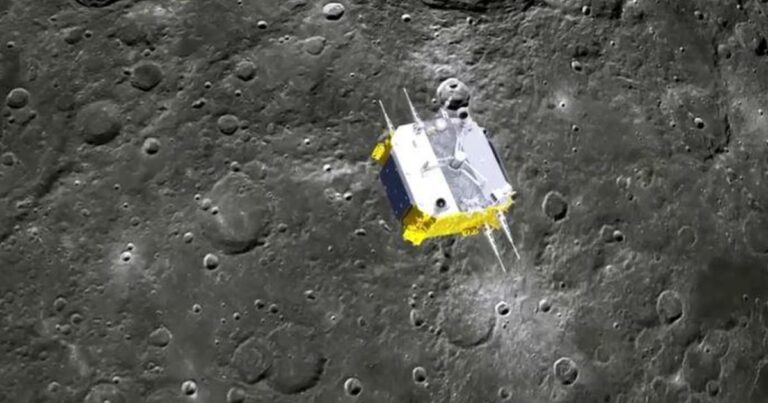Beijing China said its lunar probe had raised its red-and-gold flag on the far side of the moon for the first time, after part of the probe was launched early Tuesday morning, carrying rock and soil samples to bring back to Earth. The mission was hailed as a success in China, which has made major progress in its space program that aims to send humans to the moon by the end of the century.
of The Chang’e-6 probe was launched last month. The lander touched down on the far side of the moon on Sunday. The China National Space Administration said the spacecraft’s ascent vehicle launched at 7:38 a.m. Beijing time on Tuesday and its engines burned for about six minutes before entering a predetermined orbit around the moon.
The agency said the probe survived high-temperature tests on the lunar surface and used both drilling and surface collection to obtain samples, which were stored in a container inside the probe’s ascent section as planned.
The container will be transferred to a re-entry capsule that is scheduled to return to Earth in the desert of China’s Inner Mongolia region around June 25.
Reuters/CCTV
The small flag, which the space agency said was made from a special composite material, emerged from a retractable arm that deployed from the side of the lunar lander and was not placed on lunar soil, according to an animation of the mission released by the space agency.
“Mission accomplished!” Foreign Ministry spokesperson Hua Chunying wrote on X. “An unprecedented achievement in the history of human lunar exploration!”
Missions to the far side of the moon will be more difficult because it faces away from Earth and would require relay satellites to maintain communications, and the terrain is rougher and there are fewer flat areas to land on.
The probe’s landing site will be in the Antarctic-Aitken Basin, an impact crater formed more than 4 billion years ago that is eight miles deep and 1,500 miles in diameter, according to Xinhua.
The crater is the oldest and largest of its kind on the moon and could provide the oldest information about the moon, Xinhua said, adding that the giant impact may have ejected material from deep within the surface.
The mission is the sixth in the Chang’e lunar probe program, named after the Chinese moon goddess, and the second designed to return samples from the lunar near-surface, after Chang’e-5 in 2020.
Tingshu Wang/Reuters
The moon program is currently being developed by China amid growing competition with space exploration leaders such as the United States, Japan and India. 3 seater China has its own space station orbiting Earth and aims to send astronauts to the moon by 2030. Three more Chinese lunar exploration missions are planned over the next four years.
If China succeeds, it will become the second country to send humans to the moon after the United States, which plans to send astronauts to the moon again for the first time in more than 50 years, though NASA earlier this year pushed back that goal to 2026.

